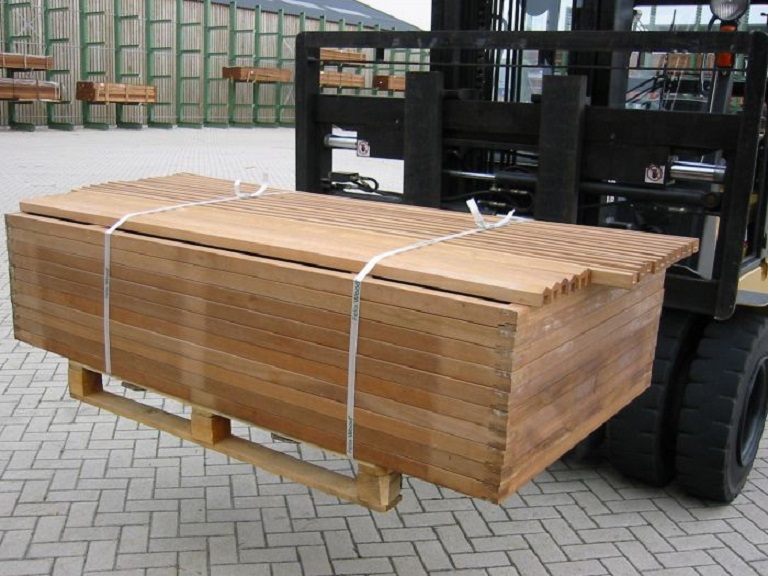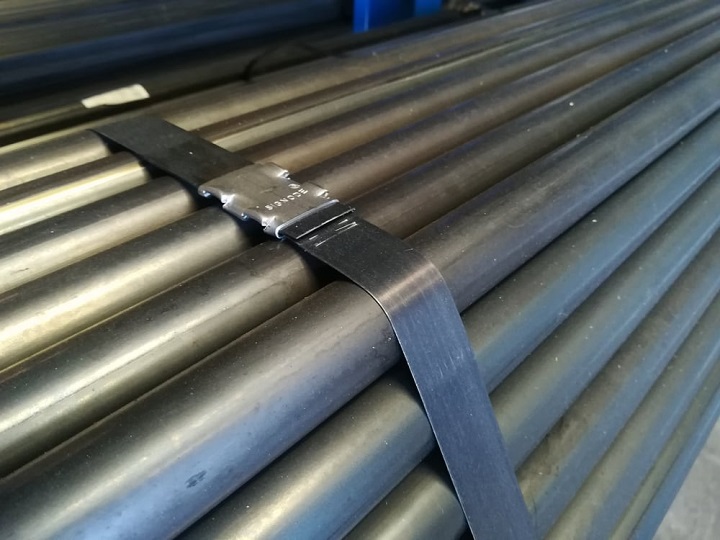Contents
Whether for storage or shipping, adopting efficient process improvements can play a significant role in your business’s cost savings in the long term. This is especially true for managing effective supply chains, where securing products on a pallet is a big part of everyday operations, but is oftentimes overlooked. If you don’t know the full benefits of pallet strapping, the different types of strapping materials available and their distinct advantages and disadvantages, it’s understandable why you might think of it as an extra expense.

Pallet strapping, banding or bundling, is the process of unitising different items together on a pallet. By taking advantage of a pallet strap, you can add extra assurance of knowing your products are stored or shipped safely, and end up getting to their destination in one place. There are three major benefits of pallet strapping that you need to be aware of.
Benefits of Pallet Strapping
Protecting Your Products from Damage
The most obvious and important benefit of pallet strapping is that it keeps the products you’re storing or shipping safe from any damage. In other words, it helps extend the longevity of the product by preventing it from shifting and getting damaged during transport.
Protecting Your Employees
If you don’t properly secure your products, there’s a higher chance of them from falling and potentially injuring your employees in the warehouse or production floor. Pallet straps minimise the risk of workplace injuries and improve safety as the product goes through your supply chain.
Save Space
Saving space is extremely important when it comes to making the most out of your storage facility and shipping operations. Pallet strapped materials require less floor space than stretch film and pallet wraps. That being said, a single coil of pallet strapping can provide you with a few thousand metres of material while taking up less room in your facility.

Types of Pallet Strapping Materials
There’s a wide range of pallet strapping materials available, and each of them offers distinct advantages for containing products. For that reason, it’s important to understand the differences between the different materials so that you know which applications each and every one of them is best suited for. Recovery and elongation are the two primary factors to consider. Elongation represents the material’s ability to bend and stretch, whereas recovery represents the material’s ability to return to its initial state after expanding. The most popular types of strapping materials are woven polyester strapping, polypropylene, and steel strapping.
Polypropylene Strapping
This is the most popular strapping material for securing light-to-medium duty loads and is typically used in applications that don’t require as much breaking strength. Polypropylene strapping provides a high level of elongation, however, consistent pressure can lead to low recovery capabilities. Polypropylene strapping can be secured using buckles and it can be tightened by hand or a strapping tensioner if you require a tighter fit.
Polyester Strapping
Polyester strapping features high recovery and break strength capabilities. This strapping material is best suited for securing loads that are susceptible to shifting during transport. It requires a tensioner and equipment to crimp the seal around it or a sealer that welds the strapping material together. There are two types of polyester strapping – plastic and woven polyester strapping. The plastic version is similar to polypropylene strapping, whereas the woven version is very lightweight, has the ability to retain its tension, while also giving you the ability to re-tension it.

Steel Strapping
Steel strapping is the oldest strapping method for shipping. It’s also the strongest, albeit the costliest. Steel strapping is used exclusively for heavy-duty applications, and it requires a special steel tensioner, sealing tools and seals. While steel has high break strength, it has low elongation capabilities. It’s UV resistant and has sharp edges, so you should always wear personal protective equipment while strapping pallets or packages with steel.
How to Choose the Right Material
The break strength of the strapping material is of utmost importance. This represents the amount of force needed to break the strapping material. The break load rating of the material you choose should be slightly above the expected force it’s going to be subjected to. However, using heavy-duty strapping that your loads don’t need may end up being ineffective and a waste of money. The break strength required by the load depends on its size and weight, as well as the number of straps you’re using to secure it. Additionally, you have to consider the forces that the load will be subjected to during transport. Fortunately, you can figure out the break strength of the strapping material pretty easily, by simply looking at the specification sheet. Unfortunately, figuring out the required brake strength of the load you intend on securing is not as easy, and you might have to go through some trial and error to figure it out.

